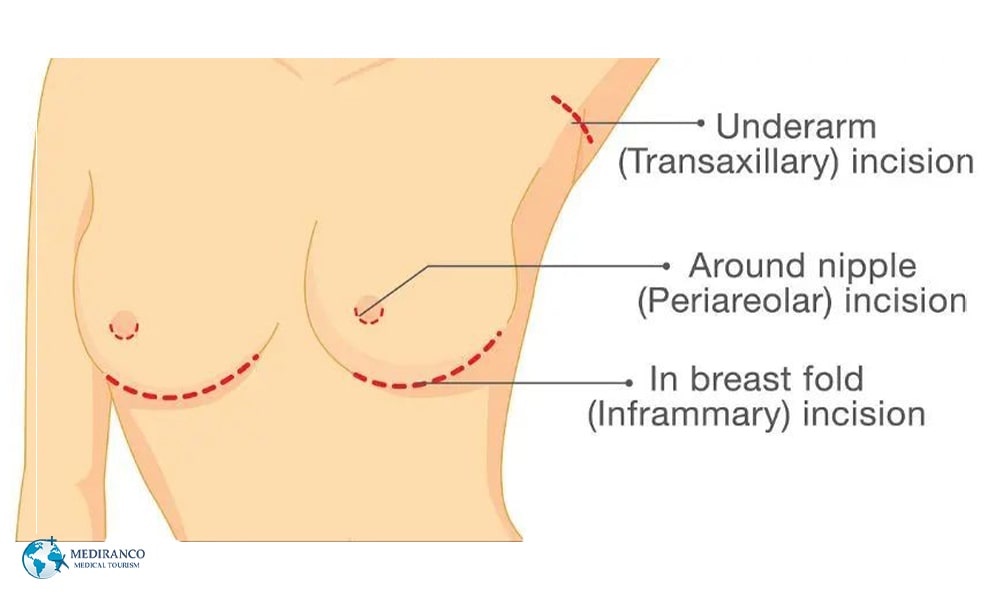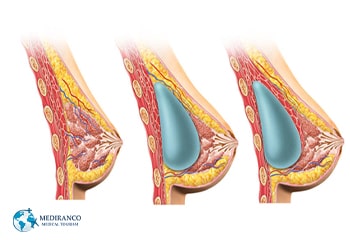Breastfeeding after Breast Augmentation: Breast augmentation is one the most common surgeries done around the world which is done by using breast implant to make the breasts appear larger. But one the most common concerns of patients is that can they breastfeed after the surgery or not. The short answer is yes, you can safely breastfeed even with implants but if you want to know more about this subject stay with us through the end of this article.
Table of Contents
ToggleWhat are breast implants made of?
There are two basic types of breast implants:
- Saline-filled implants which are silicone shells filled with sterile salt water (saline)
- Silicone gel-filled implants which are silicone shells filled with a plastic gel (silicone)
So both types have silicone shells.
Can you breastfeed after getting breast implants?
Yes, in most cases you can breastfeed after getting breast implants, but it depends on the type of surgery and the technique used by the surgeon. If the surgery was done through the areola (nipple) or if the milk ducts or nerves were damaged during the procedure, breastfeeding might be more difficult or impossible. It’s important to discuss your plans for breastfeeding with your surgeon before getting breast implants.
Is it safe to breastfeed with breast implants?
Some people worry that having silicone implants in breast maybe harmful to the baby, but there has been no evidence to prove this matter and according to CDC ( Centers for Disease Control and Prevention ) , silicone implants don’t cause a safety problem for breastfeeding babies. In fact researchers have found more silicone in baby formula and cow’s milk than breast milk of the women with breast implants. But even if a little silicone gets into your milk, it most likely won’t harm your baby.
Will breast implants affect the milk?
There has been no scientific evidence that having breast implants can affect the quality of breast milk or be harmful to the baby. But they can have an impact on the milk supply.
Research shows that women who have breast implants are less likely to exclusively breastfeed their babies than women who don’t have implants. But you have to keep in mind that most women who choose to have breast augmentation surgery, usually have small breasts and therefor little natural glandular breast tissue (which produces milk) to begin with. So these women may not have enough glandular tissue to produce sufficient amounts of breast milk, whether they have the surgery or not.
Will breastfeeding affect the look of implants?
It’s normal for the size and shape of your breasts to change during pregnancy and breastfeeding, however your implants won’t be affected and usually your breasts will return to their previous size and shape over time.
Will my implants sag after breastfeeding?
However, sagging after breastfeeding can depend on several factors, such as the size and type of breast implants, the amount of time breastfeeding, and changes in weight. It is recommended to consult with a board-certified plastic surgeon to discuss and address concerns about potential changes in breast appearance after breastfeeding.
What are the challenges of breastfeeding with implants?
Although some women don’t have any problems with breastfeeding after their augmentation surgery but some women do. The most common breastfeeding problem (20%) is insufficient milk production which depends on how your augmentation surgery was done. Implants maybe placed between the glandular breast tissue and the muscle of the chest wall which puts it directly against breast tissue, therefore the pressure on the milk ducts makes it more difficult to produce enough breast milk or for the milk to flow freely inside the ducts during feedings. Implants may also be placed beneath the chest wall muscle layer which is less likely to affect milk production or flow.
Location of the incision which the implant is inserted though also matters.
If the incision is made in the armpit or in the crease beneath the breast are less likely to have an impact on breastfeeding. But if the incision is made around the areola (the darker area surrounding the nipple), nerves or milk duct may be severed which may result in less milk production and flow. If the nerves of the nipple are damages during surgery, they may lose sensitivity to sucking by your baby which physiologically leads to production of Prolactin; a hormone that helps to make breast milk. However, glandular tissue can develop and nerves can regrow gradually especially during pregnancy. The longer the interval between getting implants and becoming pregnant, the more likely the damaged tissues are to be repaired and capable of producing milk.

When you are breastfeeding you may experience some side effects such as breast engorgement or mastitis which can be seen in all women but if you have breast implants you have a greater risk of getting them and your symptoms might be slightly worse.
Can you breastfeed after mastectomy or breast reduction surgery?
If you had been diagnosed with breast cancer and have gone under total mastectomy as a part of your treatment, you won’t be able to breastfeed on that side, because most of the breast tissue and gland that produce milk have been resected or damaged. Also if you were treated with partial mastectomy and radiation therapy, you should expect significantly reduced milk production on the affected side. But you can use the other breast to nurse your baby. Even a single breast can produce enough breast milk for healthy infant growth.
If you had breast augmentation after a mastectomy, you probably won’t be able to breastfeed on that side due to the loss of breast tissue and glands which produce milk.
In case of breast reduction surgery, while some glandular tissue is removed, in most cases enough breast tissue is left to enable milk production after the surgery.
What can you do to successfully breastfeed with breast implants?
You may face some challenges considering the milk supply. To address this problem you can make an appointment with a lactation consultant so you can give breast milk to your baby as much as possible. They can teach you about the breastfeeding positions making sure that your baby is latching well.
Attending a breastfeeding workshop while pregnant may answer some of your concerns and help you make a breastfeeding plan.
It’s better to nurse your baby as often as you can. This is because while you breastfeed your baby, your body gets the signal to produce more milk. You can also use breast pumps between feedings.
It’s best to let your physician know if you have breast implants, so they can keep an eye on your baby’s weight and make sure they’re getting enough milk. You may need support to increase milk production. You can also use supplements like baby formula.
last word
In conclusion, if you are planning to have breast augmentation surgery and want to have children in the future, you shouldn’t worry that you won’t be able to do so and it’s safe for the babies as well. You should talk to your breast surgeon about whether or not you are planning to have children after your breast augmentation. So if possible, your surgeon can plan to do the surgery in a way that can enable you to breastfeed in the future.

If you have are interested in doing breast augmentation or have any more questions you can contact our support team and will help you through. Mediranco will provide you with the best quality of implants and put you in contact with the best breast surgeons in Iran who will help you achieve your desired outcome from your surgery with the possible price.

